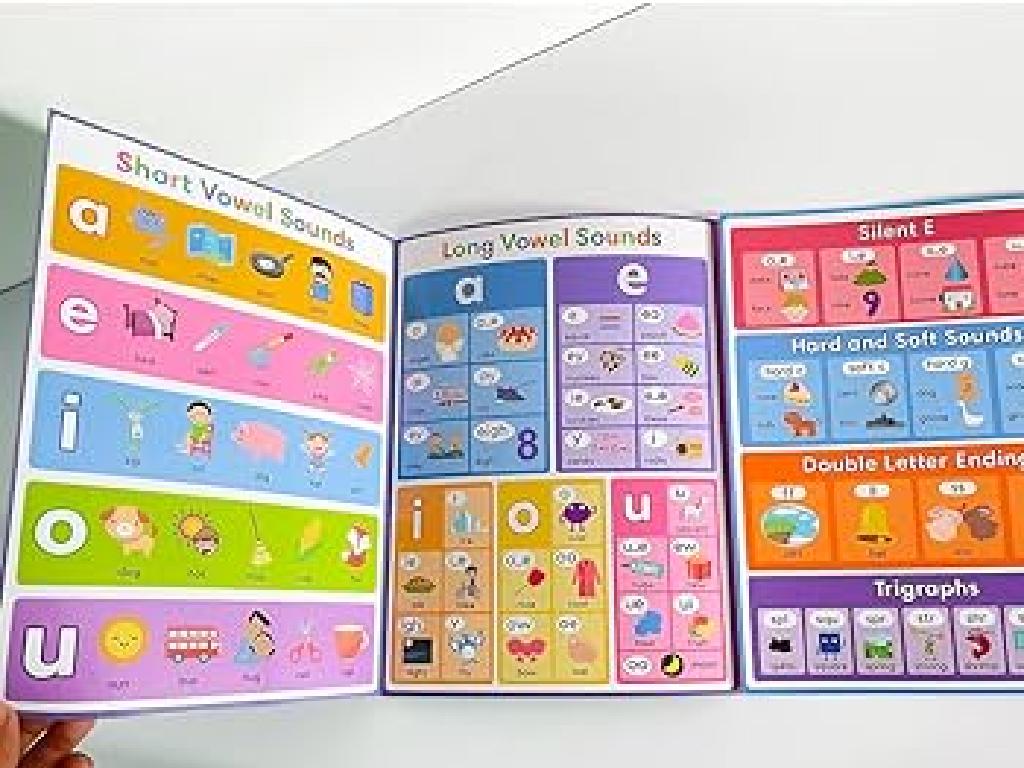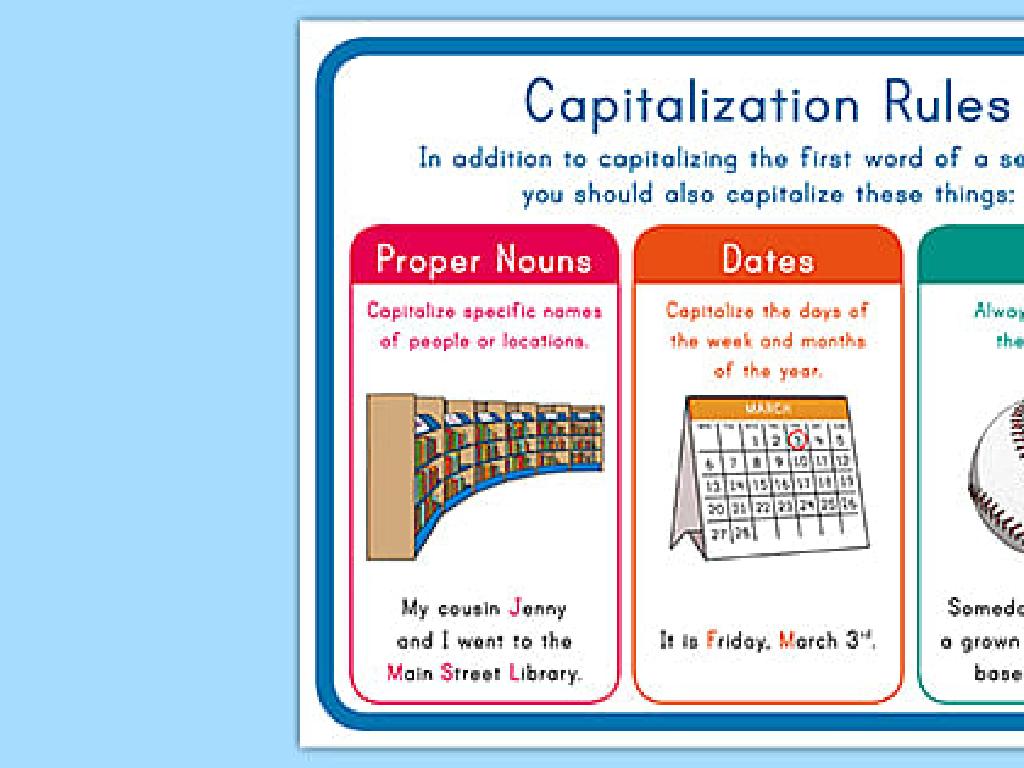Name Countries Of Asia: Region 1
Subject: Social studies
Grade: Seventh grade
Topic: Asia: Geography
Please LOG IN to download the presentation. Access is available to registered users only.
View More Content
Exploring Asia: Region 1 Countries
– Asia: The largest continent
– Asia’s global significance
– A cultural, economic, and political powerhouse
– Introduction to Region 1
– Region 1 includes East Asia and Southeast Asia
– List of Region 1 countries
– China, Japan, South Korea, North Korea, Mongolia
|
Begin the lesson by highlighting Asia’s status as the largest continent in terms of both area and population. Emphasize its diverse cultures, languages, and economies, and its influence on global affairs. Introduce Region 1, focusing on East Asia and Southeast Asia, and discuss the geographical and cultural characteristics that define this subregion. Provide a list of countries such as China, Japan, South Korea, North Korea, and Mongolia, and encourage students to locate them on a map. The goal is to give students a foundational understanding of Asia’s role in the world and a starting point for exploring the individual countries within Region 1.
Exploring East Asia: Region 1 of Asia
– Asia’s five diverse regions
– Zooming in on East Asia
– East Asia, known for its rich history and economic significance
– Countries of East Asia
– Includes China, Japan, Mongolia, North Korea, South Korea, Taiwan
– Cultural and geographical diversity
– Home to various languages, traditions, and landscapes
|
This slide introduces students to the geographical division of Asia into five regions, with a focus on East Asia, known as Region 1. It’s important to highlight the significance of East Asia in terms of its historical, cultural, and economic impact. The countries listed are key players in both regional and global contexts. Emphasize the diversity within this region, from the vast Gobi Desert of Mongolia to the technological hubs of Japan and South Korea. Encourage students to explore the unique characteristics of each country, such as language, customs, and natural features. This will set the stage for a deeper dive into the geography and cultures of Asia in subsequent lessons.
East Asia: Physical Features
– Major geographical landmarks
– Mountains, deserts, rivers define the region
– The Himalayas, Gobi Desert, Yellow River
– The Himalayas: world’s highest mountain range, Gobi: vast cold desert, Yellow River: China’s sorrow due to flooding
– Geography’s impact on culture
– Traditions, food, and activities often relate to the surrounding environment
– Lifestyle adaptations to geography
– Housing styles, agriculture, and transportation methods are influenced by the terrain
|
This slide introduces students to the major physical features of East Asia and how these features have shaped the culture and lifestyle of the people living there. Emphasize the significance of the Himalayas, Gobi Desert, and Yellow River in the region’s geography. Discuss how the rugged terrain of the Himalayas has led to isolated communities with unique cultures, while the Gobi Desert’s harsh conditions have influenced nomadic lifestyles. The Yellow River’s fertile plains have supported agricultural societies but also brought challenges due to flooding. Encourage students to think about how living near these features would influence their daily lives and to compare it with their own environment.
China: The Giant of East Asia
– China’s vast landscape
– Home to diverse terrain from mountains to deserts
– Cultural & historical significance
– Rich heritage with the Great Wall & Forbidden City
– China’s global influence
– A major economic & political power
– Population dynamics
– The most populous country in the world
|
This slide introduces students to China, emphasizing its size and diversity in both physical geography and population. Highlight China’s cultural and historical importance by mentioning iconic landmarks like the Great Wall and the Forbidden City. Discuss China’s role as a dominant force in Asia and on the global stage, touching on its economic growth and political influence. Lastly, address the demographic aspect, noting that China has the largest population of any country, which presents both challenges and advantages. Encourage students to think about how China’s geography might influence its culture and its role in the world.
Exploring Japan: Island Nation
– Japan’s archipelago geography
– Consists of over 6,800 islands with four main islands: Honshu, Hokkaido, Kyushu, and Shikoku.
– Fusion of culture and technology
– Known for traditional arts and modern tech. Think of sushi, sumo, robots, and bullet trains.
– Environmental challenges faced
– Issues like natural disasters, pollution, and nuclear risks due to its geography and industrialization.
– Japan’s role in Asia and the world
|
This slide introduces students to Japan, an island nation with a unique geography that has shaped its culture and society. The archipelago of Japan is made up of thousands of islands, creating a diverse and rich environment that influences everything from daily life to the national economy. Students should understand how Japan’s culture seamlessly integrates ancient traditions with cutting-edge technology, making it a leader in global innovation. Discuss the environmental challenges Japan faces, such as earthquakes, tsunamis, and industrial pollution, and how these have impacted its development and policies. Highlight Japan’s significance in Asia and its global contributions, setting the stage for a deeper discussion on its role in international affairs.
Korea: A Peninsula Divided
– The division of the Korean Peninsula
– A result of post-WWII agreements and the Korean War.
– North Korea vs South Korea
– North Korea is isolated, South Korea is technologically advanced.
– The Korean Demilitarized Zone
– A buffer zone between the two Koreas, established in 1953.
– Significance of the DMZ
– It’s a symbol of conflict and hope for reunification.
|
This slide aims to provide students with an understanding of the historical and current situation of the Korean Peninsula. It’s important to explain the geopolitical events following World War II that led to the division of Korea into two separate countries with distinct political systems and economies. Highlight the stark contrasts between North Korea’s isolationist policies and South Korea’s rapid development and global integration. Discuss the establishment and role of the DMZ, a 250-kilometer long and 4-kilometer wide buffer zone that has become a symbol of the division but also a potential gateway to peace and reunification. Encourage students to reflect on the impact of historical events on current global relations and the lives of the Korean people.
Mongolia: Land of the Nomads
– Explore Mongolia’s vast grasslands
– Home to the traditional nomadic lifestyle, with herders moving across the steppes.
– Genghis Khan’s enduring legacy
– Genghis Khan, the founder of the Mongol Empire, left a significant mark on Mongolia and the world.
– Modern Mongolia’s dual focus
– Today’s Mongolia strives to honor its past while embracing economic growth.
– Nomadic culture and urban development
|
This slide introduces students to Mongolia, a country with a rich nomadic heritage and a significant historical figure, Genghis Khan. Emphasize the vastness of the Mongolian grasslands, which are central to the traditional nomadic way of life. Discuss Genghis Khan’s impact on Mongolia’s history and his legacy that persists today. Highlight the challenges and achievements of modern Mongolia as it seeks to balance preserving its cultural heritage with the demands of development and urbanization. Encourage students to reflect on how a country can maintain its traditions while adapting to a changing world.
Taiwan: A Modern Democracy
– Taiwan’s political landscape
– Despite its complex status, Taiwan operates as a thriving democracy.
– Economic achievements
– Taiwan boasts a robust economy with strong tech and manufacturing sectors.
– Cultural diversity
– A rich tapestry of indigenous, Chinese, and Japanese cultural influences.
– Technological advancements
– A global leader in semiconductor manufacturing and other high-tech industries.
|
Taiwan is a unique case study in Asia due to its political situation and lack of widespread international recognition as a sovereign state. However, it maintains a vibrant democratic system and a high level of economic development. Discuss Taiwan’s economic success, particularly in technology and manufacturing, and how it has become an integral part of the global supply chain. Highlight the cultural blend that characterizes Taiwan, with influences from its indigenous peoples as well as historical Chinese and Japanese rule. Emphasize Taiwan’s significant contributions to technology, especially in the semiconductor industry, which is crucial for electronics worldwide. Encourage students to explore how Taiwan’s political, economic, and cultural dynamics contribute to its identity and global role.
Class Activity: Mapping East Asia
– Locate East Asian countries on map
– Label each country correctly
– Discuss an interesting fact with a partner
– For example, the Great Wall in China or the cherry blossoms in Japan
– Share your findings with the class
|
This interactive class activity is designed to help students familiarize themselves with the geography of East Asia. Provide each student with a blank map of Asia. Instruct them to locate countries such as China, Japan, South Korea, North Korea, and Taiwan, and label them correctly. Then, have students pair up and discuss one interesting fact about each country they’ve labeled. This could be related to culture, history, or a significant geographical feature. After the discussion, each pair will share their facts with the class, fostering a collaborative learning environment. Possible activities for different students could include drawing the flags of each country, researching a famous landmark, or exploring the cultural traditions of each nation.
Reflection and Homework: Exploring East Asia
– Reflect on East Asia’s geography
– Write an essay on a favorite East Asian country
– Choose any country like China, Japan, or South Korea
– Homework: Essay on an East Asian country
– Include what you’ve learned and why it interests you
– Study for a quiz on Asia’s geography
– Review countries and regions we’ve covered
|
This slide aims to consolidate the students’ knowledge of East Asia and prepare them for the upcoming quiz. Encourage them to reflect on the day’s lesson and think critically about the geographical, cultural, and political aspects of East Asia that they find intriguing. The essay will serve as a creative outlet for them to express their interest in a specific country and demonstrate their understanding. Provide them with a rubric for the essay to guide their writing. For the quiz preparation, suggest they review their notes, maps, and any handouts provided during the lessons on Asia. Offer to answer any questions they may have in the next class before the quiz.






